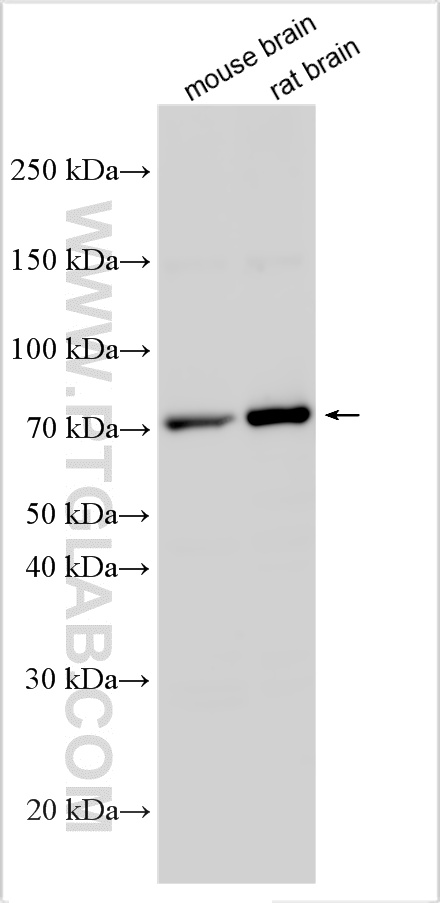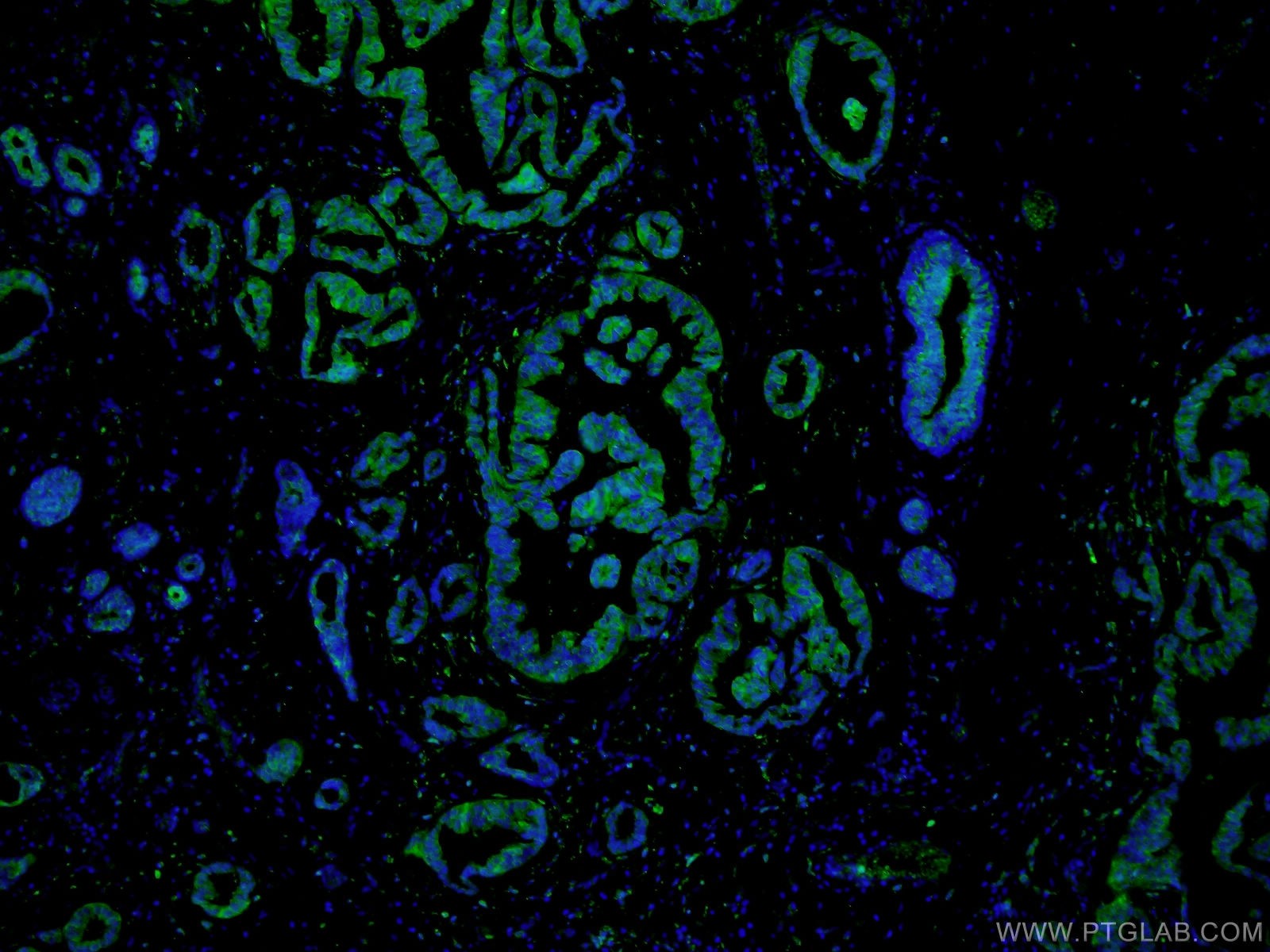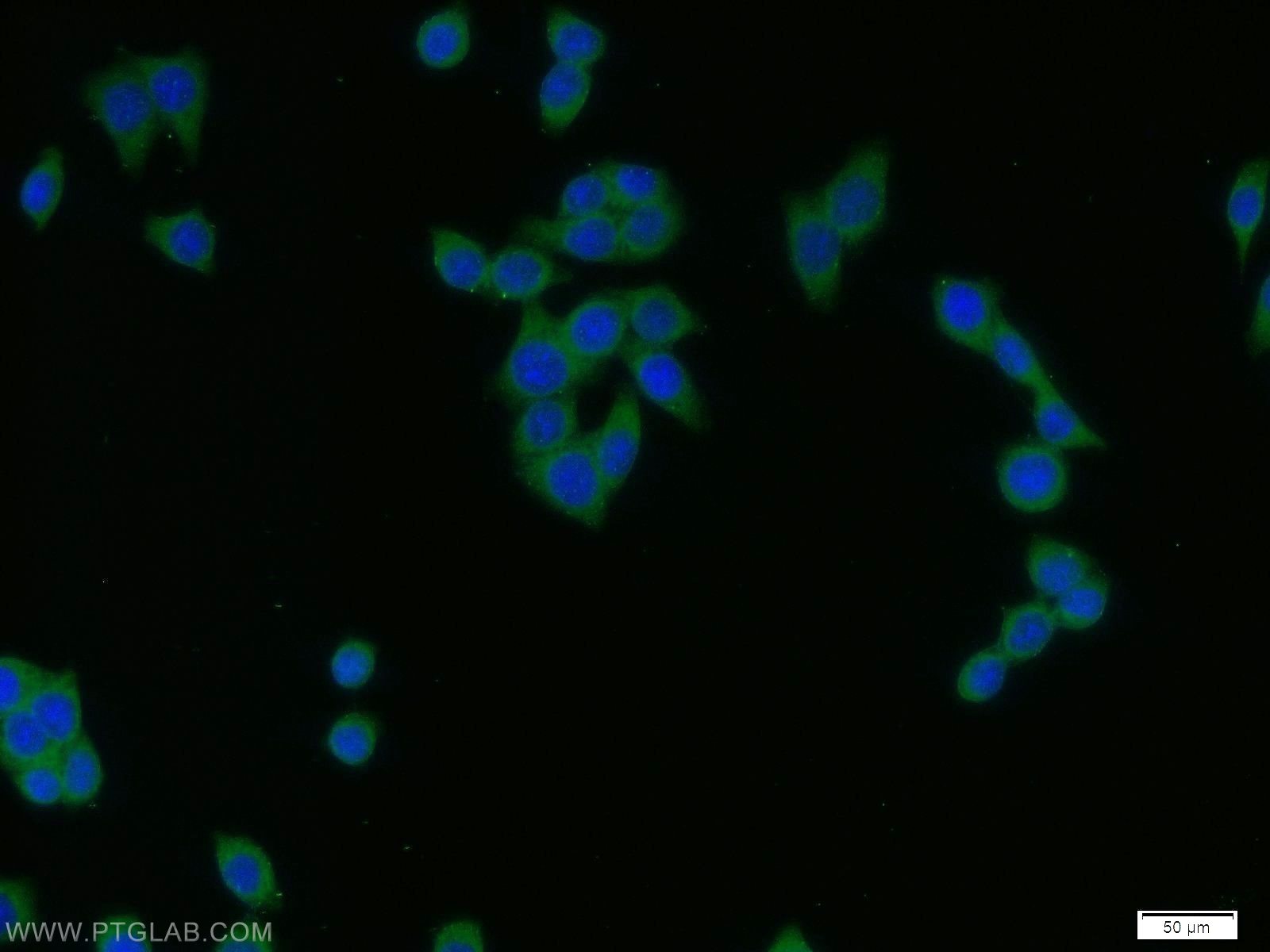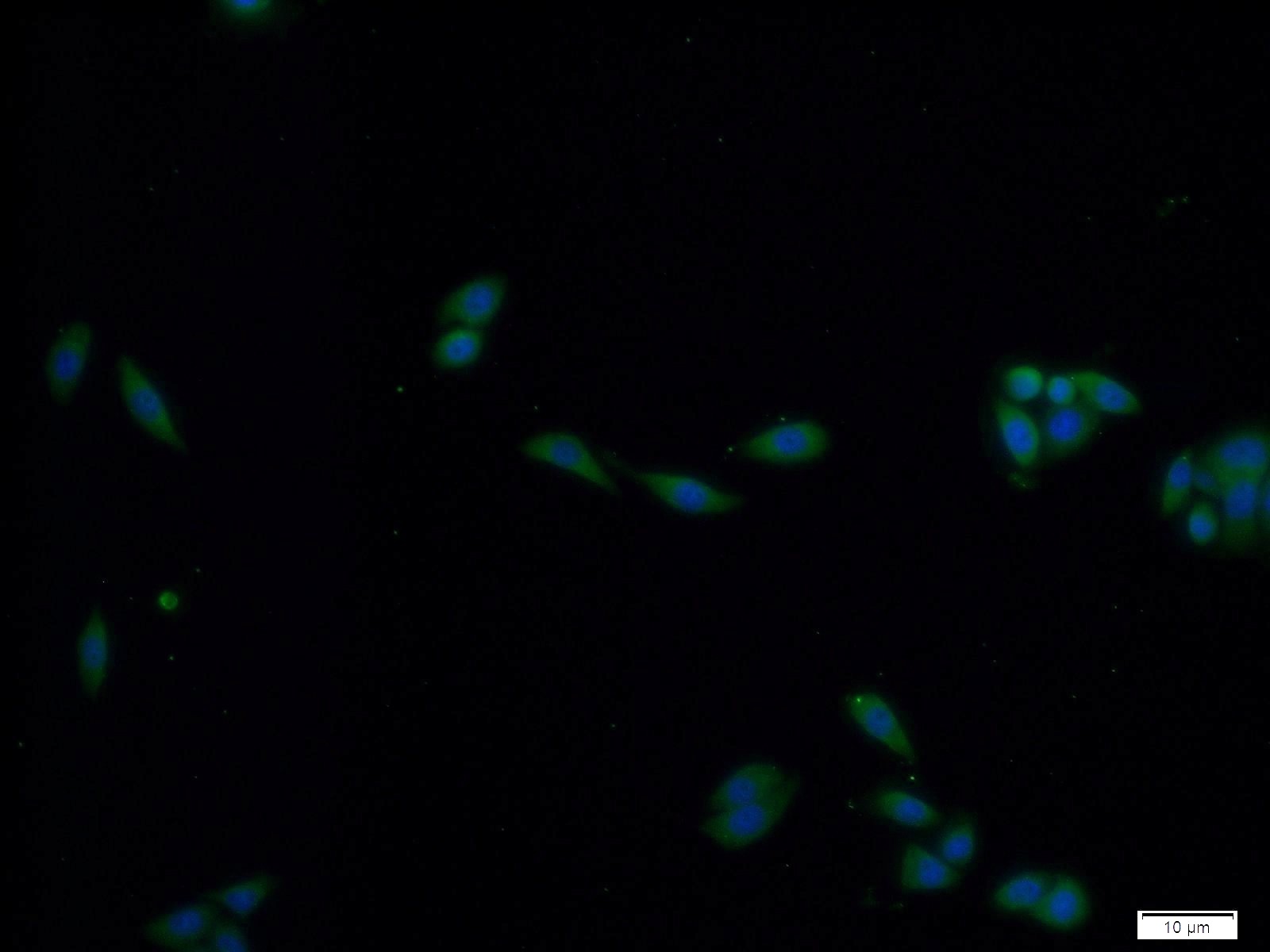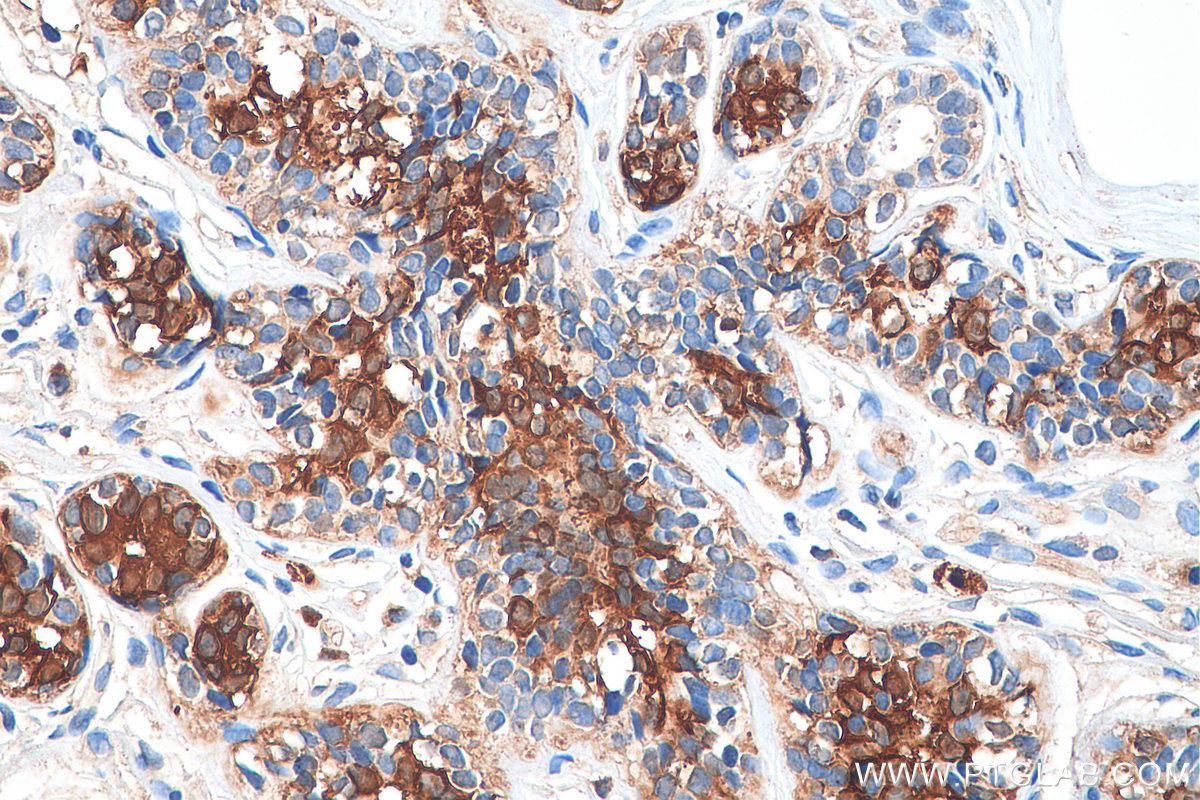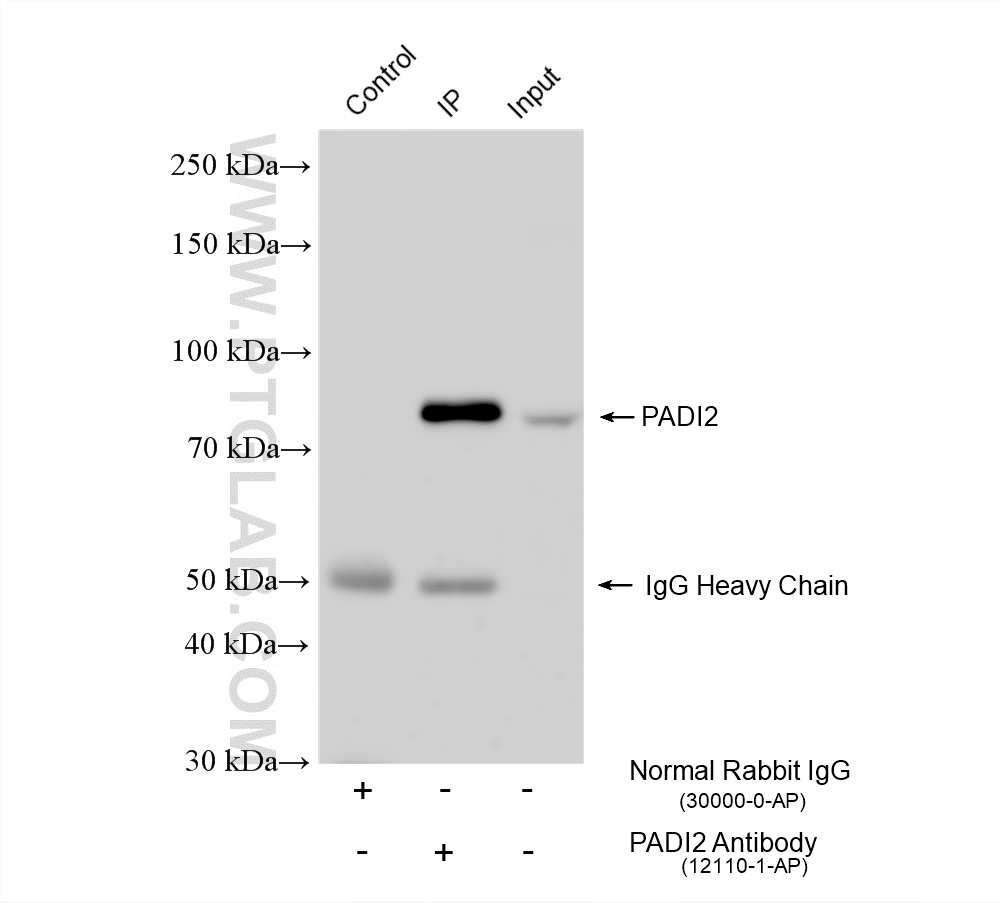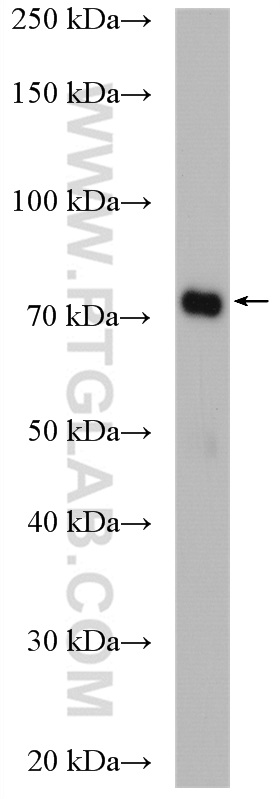验证数据展示
经过测试的应用
| Positive WB detected in | mouse brain tissue, MCF-7 cells, rat brain tissue |
| Positive IP detected in | mouse brain tissue |
| Positive IHC detected in | human breast cancer tissue Note: suggested antigen retrieval with TE buffer pH 9.0; (*) Alternatively, antigen retrieval may be performed with citrate buffer pH 6.0 |
| Positive IF-P detected in | human breast cancer tissue |
| Positive IF/ICC detected in | BxPC-3 cells, HeLa cells |
推荐稀释比
| 应用 | 推荐稀释比 |
|---|---|
| Western Blot (WB) | WB : 1:1000-1:6000 |
| Immunoprecipitation (IP) | IP : 0.5-4.0 ug for 1.0-3.0 mg of total protein lysate |
| Immunohistochemistry (IHC) | IHC : 1:50-1:500 |
| Immunofluorescence (IF)-P | IF-P : 1:50-1:500 |
| Immunofluorescence (IF)/ICC | IF/ICC : 1:10-1:100 |
| It is recommended that this reagent should be titrated in each testing system to obtain optimal results. | |
| Sample-dependent, Check data in validation data gallery. | |
产品信息
12110-1-AP targets PADI2 in WB, IHC, IF/ICC, IF-P, IP, COIP, ELISA, Blocking assay applications and shows reactivity with human, mouse, rat samples.
| 经测试应用 | WB, IHC, IF/ICC, IF-P, IP, ELISA Application Description |
| 文献引用应用 | WB, IHC, IF, COIP, Blocking assay |
| 经测试反应性 | human, mouse, rat |
| 文献引用反应性 | human, mouse, rat, pig, canine |
| 免疫原 |
CatNo: Ag2755 Product name: Recombinant human PADI2 protein Source: e coli.-derived, PGEX-4T Tag: GST Domain: 118-438 aa of BC009701 Sequence: ISLDVDADRDGVVEKNNPKKASWTWGPEGQGAILLVNCDRETPWLPKEDCRDEKVYSKEDLKDMSQMILRTKGPDRLPAGYEIVLYISMSDSDKVGVFYVENPFFGQRYIHILGRRKLYHVVKYTGGSAELLFFVEGLCFPDEGFSGLVSIHVSLLEYMAQDIPLTPIFTDTVIFRIAPWIMTPNILPPVSVFVCCMKDNYLFLKEVKNLVEKTNCELKVCFQYLNRGDRWIQDEIEFGYIEAPHKGFPVVLDSPRDGNLKDFPVKELLGPDFGYVTREPLFESVTSLDSFGNLEVSPPVTVNGKTYPLGRILIGSSFPL 种属同源性预测 |
| 宿主/亚型 | Rabbit / IgG |
| 抗体类别 | Polyclonal |
| 产品类型 | Antibody |
| 全称 | peptidyl arginine deiminase, type II |
| 别名 | EC:3.5.3.15, KIAA0994, PAD H19, PAD2, PAD-H19 |
| 计算分子量 | 665 aa, 75 kDa |
| 观测分子量 | 70-75 kDa, 50 kDa |
| GenBank蛋白编号 | BC009701 |
| 基因名称 | PADI2 |
| Gene ID (NCBI) | 11240 |
| RRID | AB_2159475 |
| 偶联类型 | Unconjugated |
| 形式 | Liquid |
| 纯化方式 | Antigen affinity purification |
| UNIPROT ID | Q9Y2J8 |
| 储存缓冲液 | PBS with 0.02% sodium azide and 50% glycerol, pH 7.3. |
| 储存条件 | Store at -20°C. Stable for one year after shipment. Aliquoting is unnecessary for -20oC storage. |
背景介绍
PADI2, also named as KIAA0994, PDI2, PAD-H19, and PAD2(Peptidylarginine deiminase II ), belongs to the protein arginine deiminase family. It catalyzes the deimination of arginine residues of proteins. PADI2 may play a regulatory role in the expression of lactation-related genes via histone citrullination during diestrus (PMID:20668670). PADI2 has two isoforms with MW 75 kDa and 49 kDa.
实验方案
| Product Specific Protocols | |
|---|---|
| IF protocol for PADI2 antibody 12110-1-AP | Download protocol |
| IHC protocol for PADI2 antibody 12110-1-AP | Download protocol |
| IP protocol for PADI2 antibody 12110-1-AP | Download protocol |
| WB protocol for PADI2 antibody 12110-1-AP | Download protocol |
| Standard Protocols | |
|---|---|
| Click here to view our Standard Protocols |
发表文章
| Species | Application | Title |
|---|---|---|
Sci Transl Med Neutrophil extracellular traps, B cells, and type I interferons contribute to immune dysregulation in hidradenitis suppurativa. | ||
Mol Cell Arginine Citrullination at the C-Terminal Domain Controls RNA Polymerase II Transcription.
| ||
J Immunother Cancer PAD-2-mediated citrullination of nucleophosmin provides an effective target for tumor immunotherapy.
| ||
Angiogenesis Angiogenic responses in a 3D micro-engineered environment of primary endothelial cells and pericytes.
| ||
Proc Natl Acad Sci U S A Peptidylarginine deiminase 2-catalyzed histone H3 arginine 26 citrullination facilitates estrogen receptor α target gene activation. | ||
Diabetes Modifying Enzymes are Elicited by ER Stress, Generating Epitopes that are Selectively Recognized by CD4+ T Cells in Patients With Type 1 Diabetes. |

